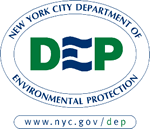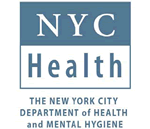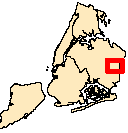May 9, 2007 DEP Contact: Anne Canty, 718-595-6600 Routine Testing of Water in Hollis, Queens, Indicates Minute Amounts of PERC ContaminationAll other areas in NYC show no PERC present; elevated test results limited to area bounded by Linden Blvd on the south, Cross Island Parkway on the east, Farmer’s Blvd on the west, and Hempstead Avenue to Jamaica Avenue on the north No known health risk from short-term exposures at levels detected Source not yet identified
PERC is a chemical used primarily in dry cleaning and auto-body repair, which are possible sources of the contamination in this area. The risk of health effects depends on duration and concentration of exposure – how long you’re exposed and how much you’re exposed to. Although at high exposure levels PERC could affect the nervous system, and exposure to PERC over very long period of time could increase the risk of cancer, the levels detected here are very low. No long-term health problems would be expected from exposure to the concentrations detected in Queens over a period of days or weeks. PERC can be encountered through various routes. Recently dry-cleaned clothing is a common source of exposure. People in the affected area of Queens who are still concerned may wish to use bottled water for drinking, cooking, and preparing infant formula and taking shorter showers or baths until the source of contamination is found and resolved. DEP will provide daily updates on the situation. The contamination was first detected on May 4, in a water sample collected on May 1 for routine monitoring. Since Sunday, May 6, DEP has sampled extensively in the area to locate the source of contamination. Testing shows that the contamination is localized within a geographic area, home to approximately 64,000 people. The area is bounded on the south by Linden Blvd., on the east by Cross Island Parkway, on the west by Farmer’s Blvd., and on the north by Hempstead Avenue to Jamaica Avenue. Since Tuesday, May 8, DEP has taken 30 samples in this part of Queens, 19 of which have been slightly elevated. Under current standards, PERC concentrations should not exceed 5 parts per billion. The highest concentrations detected by DEP have been 13 parts per billion. One part per billion corresponds to one minute in 2,000 years, or a single penny in $10 million. DEP outreach workers are going from door to door in the affected area to distribute leaflets inform residents of the situation. DEP staff are also monitoring water throughout the area to pinpoint the possible source. The agency is also sending inspectors to local dry cleaning and auto body business to check water and sewer connections, and flushing fire hydrants to remove contaminants from the system. DEP performs samples of the City water supply regularly, taking approximately 1200 samples per month throughout all five boroughs. In addition to this broad sampling, 27 sites throughout the City are tested monthly for organic chemicals including PERC. The presence of PERC appears to be a recent occurrence, as it was not detected during any prior test of this site, including the most recent test, which was done on April 3rd, 2007. DEP will have a resource center on site at Springfield Boulevard between 110th and 112th Avenues to provide information to local residents. There will also be information available on DEP’s website at www.nyc.gov/DEP. DOHMH PRESS RELEASE # 033-07
| ||||


 May 9, 2007 – As part of its routine water sampling program, the New York City Department of Environmental Protection (DEP) has detected minute amounts of tetrachloroethylene, commonly known as PERC, in the Jamaica section of Queens. Tests from throughout the remainder of the City show no elevation, and in fact no detectable PERC, in any place other than this neighborhood.
May 9, 2007 – As part of its routine water sampling program, the New York City Department of Environmental Protection (DEP) has detected minute amounts of tetrachloroethylene, commonly known as PERC, in the Jamaica section of Queens. Tests from throughout the remainder of the City show no elevation, and in fact no detectable PERC, in any place other than this neighborhood.